Beijing sees achievements in virus prevention with rapid, efficient measures
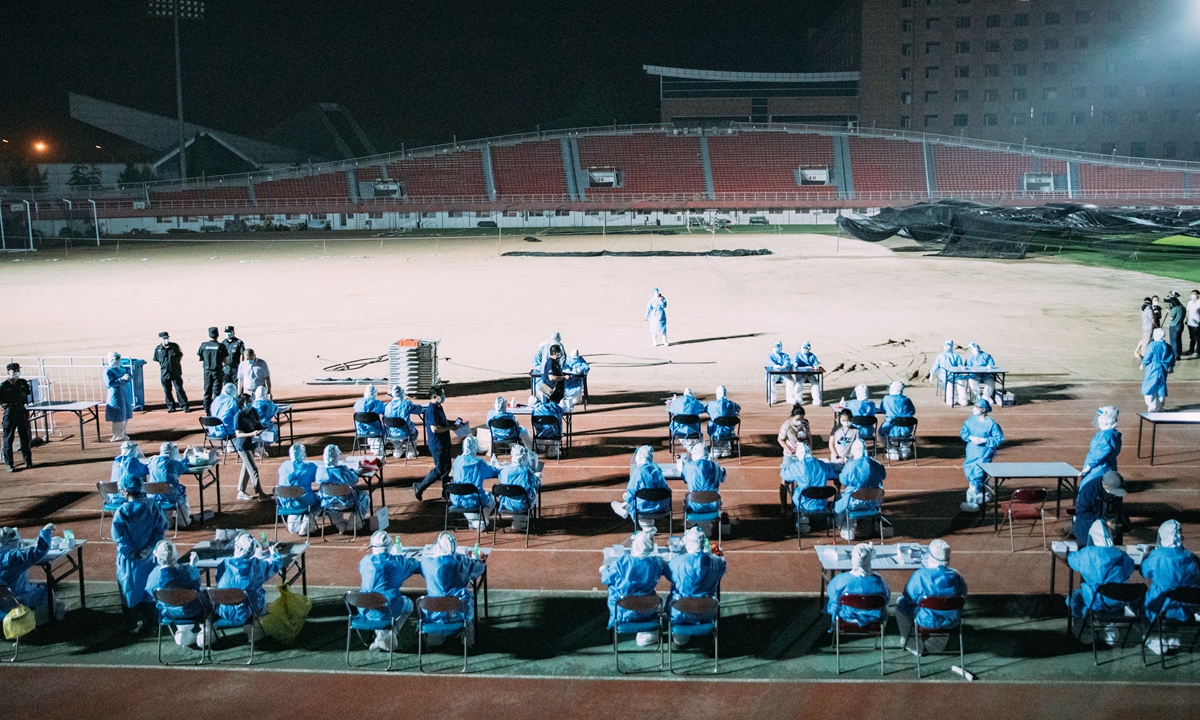
A large-scale nucleic acid testing facility is launched in Beijing's Shijingshan district on Tuesday. Photo: Li Hao/GT
In the past 10 days, Beijing has tested millions of residents for COVID-19 and conducted a series of measures to avoid its spread after a new wave broke out from the largest wholesale food market in the city, infecting more than 200 people. The capital city's disease control efforts have seen achievements in confronting the epidemic, and medical authorities said the outbreak is under control.
From June 11 to 20, more than 200 people were confirmed to have COVID-19 in Beijing. Every day, new cases were announced, with the majority related to Xinfadi market in Beijing's Fengtai district. The outbreak also affected other provinces and regions in China.
In less than two weeks, more than 2 million people in the city have taken nucleic acid tests. Many were asked to be quarantined at home.
The Biguiyuan community in Fangshan had all its residents tested on Sunday. According to the community's work schedule, residents of 14 residential buildings took the tests in batches between 8am and 10pm.
"I am not in panic this time," a resident of Biguiyuan, told the Global Times. "We have enough masks at home and know how to protect ourselves. The community is also experienced in administration during the epidemic. After the test I will walk to the supermarket in community to buy some food."
Beijing raised the emergency response to Level II on June 16.
The city government went back to "wartime mode," just like it had several months ago when the epidemic first hit China. "It's never too strict (to prevent the virus)," said Xu Hejian, spokesperson of the Beijing government.
On Saturday, a team of 70 medical staff dispatched by Hubei Province arrived in Beijing by high-speed trains. The team will aid the capital city in its current outbreak.
In the first weekend after the Level II emergency response, fewer people visited public places and more people wore face masks when outside. Many restaurants were empty.
The Palace Museum is now open to only 2,000 visitors each day. On Friday, only several hundreds reserved entries online.
Schools were suspended, and employees in some workplaces have been told to work from home.
High-tech facilities have also been put into use in Beijing. In western Beijing's Haidian district, every day from 11am to 6pm, throat swab samples are delivered to the newly established nucleic acid test lab in Haidian Hospital where clinicians examine them in a multiple-level protected environment.
This new integrated nucleic acid test lab will be used to collect and test swab samples from citizens.
Beijing has set up 98 medical institutions that provide COVID-19 nucleic acid testing services to groups and individuals, with a maximum daily testing capacity of more than 90,000 people.
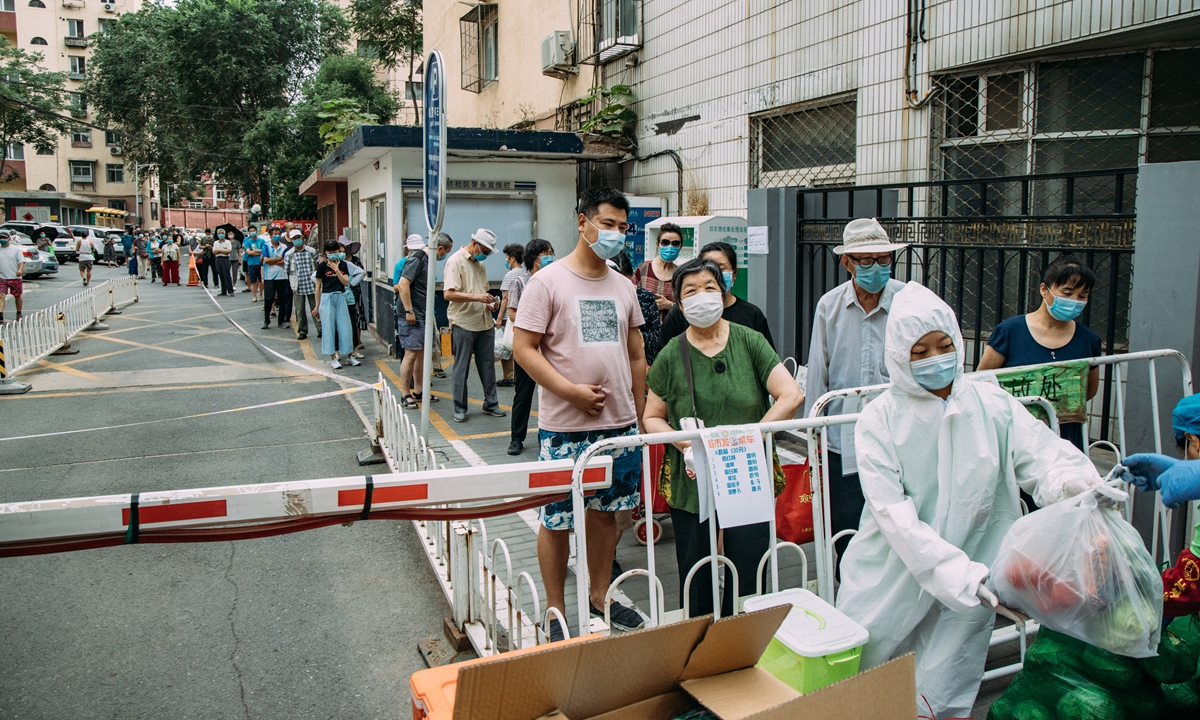
Employees from a supermarket near Yuquandong market, which reported a cluster of COVID-19 cases on Wednesday, deliver and sell goods to residents of a locked-down community. Photo: Li Hao/GT
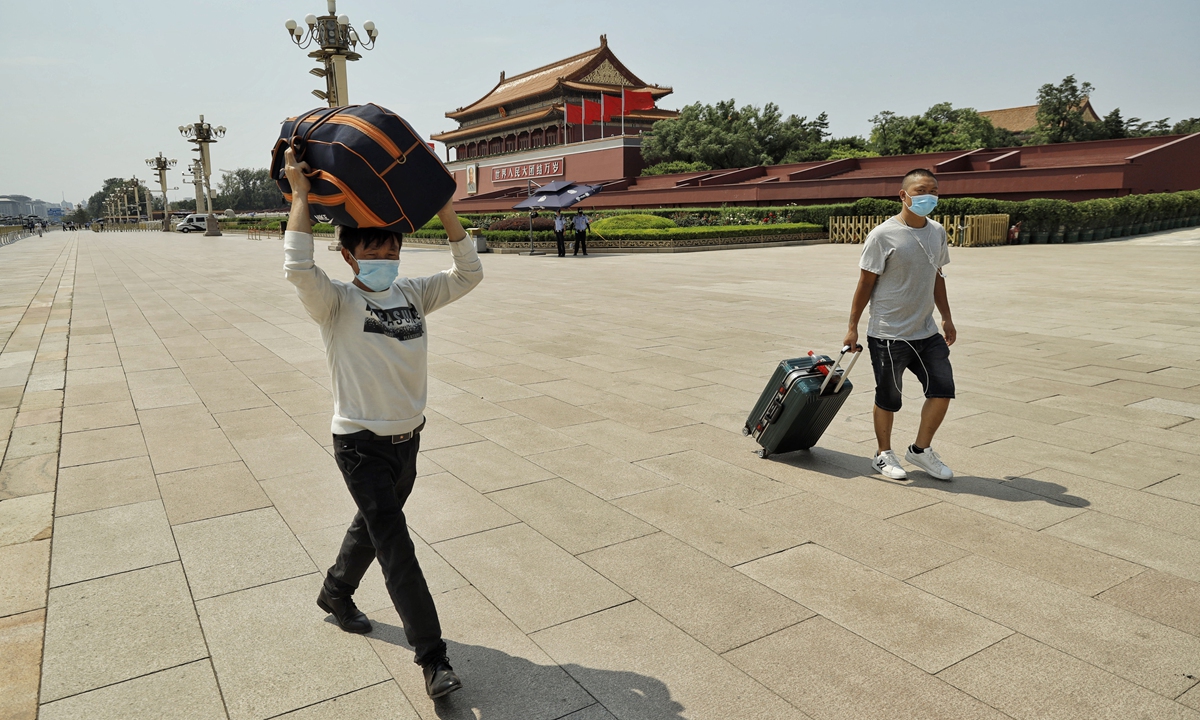
Two men in masks carry luggage pass Tiananmen Square on Friday. Few tourists were out due to the new wave of COVID-19 in the city. Photo: Li Hao/GT
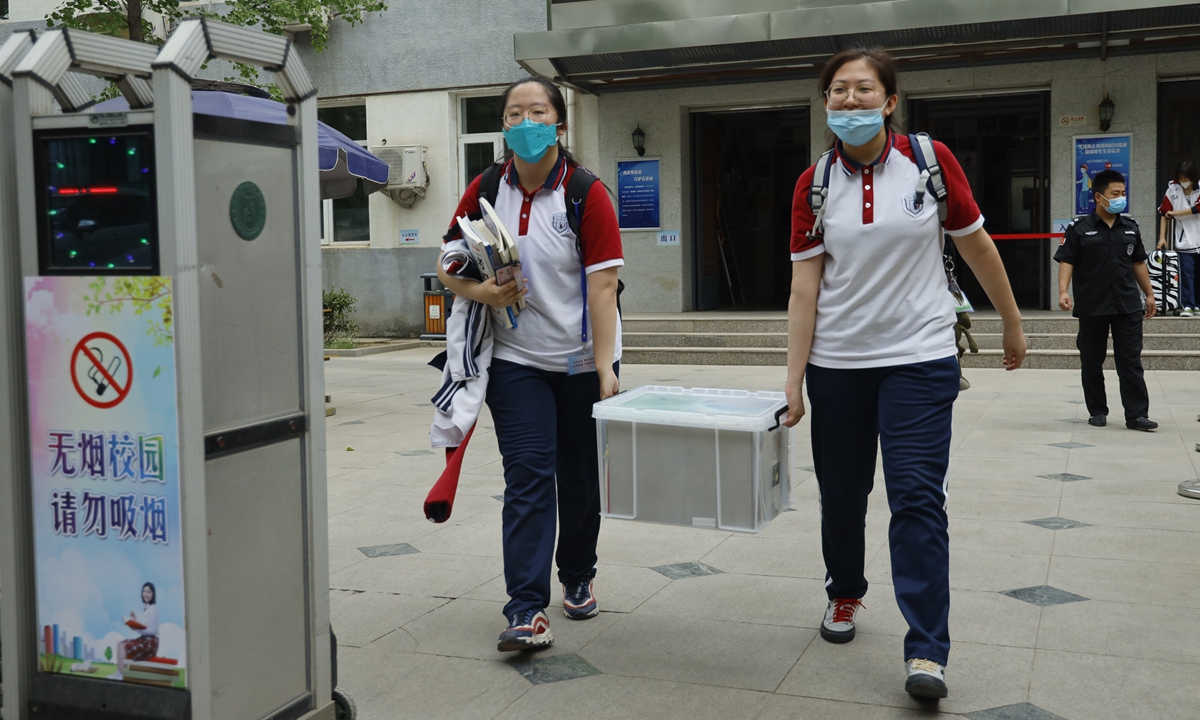
Students from Gucheng middle school in Beijing's Shijingshan district leave school with their packed personal belongings and textbooks after on-campus study was suspended amid the rising number of COVID-19 infections in the city. Photo: Li Hao/GT
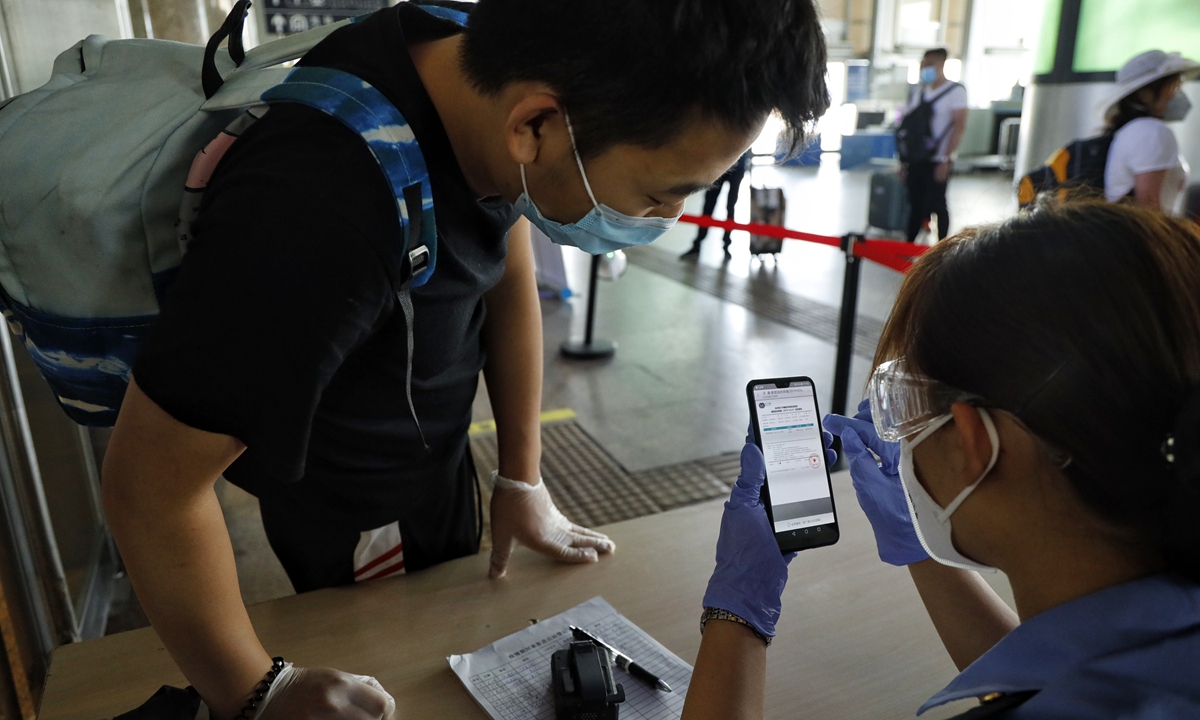
An employee checks a passenger's COVID-19 nucleic acid test document at Beijing West Railway Station on Friday. Photo: Li Hao/GT
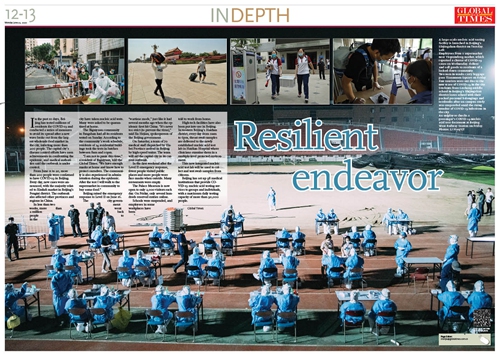
GT
Global Times
Newspaper headline: Resilient endeavor